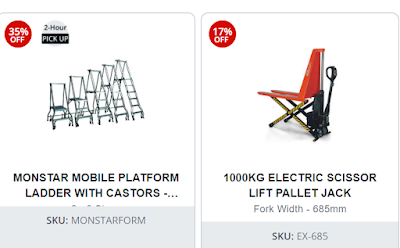Material Handling Solutions for Heavy Machinery and Components
In industries that deal with large and heavy objects, such as
manufacturing, construction, and logistics, efficient material handling is
crucial for productivity and safety. Moving hefty machinery and components
demands specialized equipment and careful planning to ensure smooth operations.
Explore the realm of material handling solutions tailored by equip2go.com.au for heavy machinery
and components, exploring innovative technologies and best practices aimed at
enhancing efficiency and safety.
Understanding the
Challenge
Handling heavy machinery and components presents unique challenges due to
their weight, size, and often irregular shapes. Traditional methods relying
solely on manual labor are not only inefficient but also pose significant
safety risks to workers. Accidents such as strains, sprains, and crush injuries
are common when attempting to lift or move heavy objects manually. Moreover,
improper handling can lead to damage to the equipment or surrounding
infrastructure, resulting in costly repairs and downtime.
Specialized
Equipment for Heavy Material Handling
Forklifts and Crane Systems: Forklifts equipped with high-capacity lifting
capabilities are indispensable in industrial settings for moving heavy
machinery and components within a facility. Similarly, crane systems offer
versatility in lifting and transporting bulky objects, especially in
construction sites where large structures or machinery need to be erected or
relocated.
Hydraulic Lifts and Jacks: Hydraulic lift tables and jacks provide
controlled lifting and lowering of heavy loads, allowing for precise
positioning during assembly or maintenance tasks. These tools are particularly
useful in workshops and maintenance bays where space may be limited, and
maneuverability is essential.
Conveyor Systems: Conveyor belts and rollers offer a continuous flow of
materials, streamlining the movement of heavy components along assembly lines
or within warehouses. These systems are customizable to accommodate various
shapes and sizes, reducing manual handling and minimizing the risk of damage or
injury.
Pallet Jacks and Skid Steers: Pallet jacks and skid steers are essential
tools for transporting palletized loads of heavy machinery or components within
a facility. Their compact size and maneuverability make them ideal for
navigating tight spaces while ensuring efficient material flow.
Innovative
Technologies Driving Efficiency
Internet of Things (IoT) Integration: IoT-enabled sensors and monitoring
devices provide real-time insights into material handling processes, allowing
for proactive maintenance and optimization of equipment usage. By harnessing
data analytics, companies can identify inefficiencies, minimize downtime, and
enhance overall productivity.
Predictive Maintenance Solutions: Leveraging predictive maintenance
software, companies can anticipate equipment failures and schedule maintenance
activities proactively, thereby minimizing disruptions to material handling
operations. By addressing issues before they escalate, organizations can
optimize uptime and extend the lifespan of their assets.
Best Practices
for Safe Material Handling
Employee Training and Certification: Proper training and certification
programs are essential for personnel involved in material handling tasks,
ensuring they have the knowledge and skills to operate equipment safely and
efficiently. Ongoing training sessions should emphasize best practices, risk
awareness, and emergency procedures to mitigate workplace accidents.
Load Assessment and Planning: Before lifting or moving heavy objects,
conducting a thorough assessment of the load's weight, dimensions, and center
of gravity is critical for selecting the appropriate handling equipment and
techniques. Proper planning minimizes the risk of accidents and ensures smooth
execution of material handling tasks.
Use of Personal Protective Equipment (PPE): Workers engaged in material
handling activities should wear appropriate PPE, including safety gloves,
steel-toed boots, and hard hats, to protect against potential hazards such as
falling objects or crushing injuries. Adhering to PPE guidelines significantly
reduces the risk of workplace accidents and enhances employee safety.
Regular Equipment Inspection and Maintenance: Routine inspection and
maintenance of material handling equipment are vital for identifying potential
issues and ensuring optimal performance. Any signs of wear, damage, or
malfunction should be addressed promptly to prevent accidents and maintain operational
efficiency.
Conclusion
Effective material handling
solutions are indispensable for industries dealing with heavy machinery and
components, enabling organizations to optimize productivity, minimize risks,
and ensure the safety of their workforce. By leveraging specialized equipment,
innovative technologies, and best practices, companies can streamline material
flow, enhance operational efficiency, and maintain a competitive edge in
today's dynamic business landscape. Prioritizing safety, training, and continuous
improvement fosters a culture of excellence where employees can thrive while
achieving organizational objectives.




Comments
Post a Comment